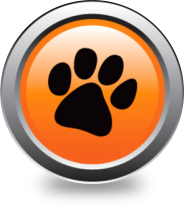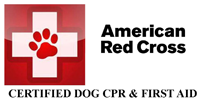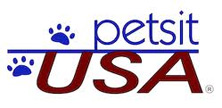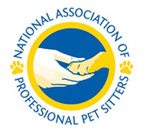Pet Obesity on the Rise
New data from Nationwide, the nation’s first and largest provider of 
In a survey from October 2013, the Association for Pet Obesity Prevention (APOP) found that 52.6% of dogs and 57.6% of cats are overweight or obese in the United States. Founder of APOP and veterinarian, Ernie Ward, said pet obesity “has the greatest collective negative impact on pet health, and yet it is almost completely avoidable.” 28% of dog owners and 33% of cat owners buy pet food/nutrition products related to weight/obesity. The biggest concern with this issue is that the majority of dog and cat owners “thought their pet was in the normal weight range.”
We could list all the conditions that can be caused by your pet being overweight and tell you that by allowing your dog or cat to be overweight you are impacting the quality of their life not to mention shorting their life span but if you don’t know what a healthy normal weight looks like it won’t matter. So here is a diagram that will help!
- VERY THIN-20% below ideal body weight: Ribs can easily be felt with no fat cover.
- UNDERWEIGHT-10% below ideal body weight: Bones raised with minimal tissue below the skin and bone.
- IDEAL BODY WEIGHT: ribs can be felt through slight fat cover.
- OVERWEIGHT-10% above ideal body weight: Difficult to feel ribs through moderate fat cover. A slightly sagging abdominal fat pad may be seen in cats.
- OBESE-20% above ideal body weight: Ribs are difficult to feel under thick fat. Cats have a prominent sagging abdominal fat pad.
Check with your veterinarian if you are unsure about your pet’s weight. If your pet is overweight you can help them shed those excess pounds by decreasing feeding portions as well as increasing exercise or both. Special diet foods are not always necessary. You can increase their fiber intake by adding things like frozen green beans as well as carrots to your dog’s food. Fiber helps them feel fuller longer. If you give your pet treats, choose healthier options (first ingredient should be a meat protein versus corn, wheat etc.). Take those extra treat calories into consideration when calculating their meal portions.
Let’s face it who can resist the face of their pet staring at them begging for a treat? But they aren’t always doing it because they are hungry. Animals are genetically designed to eat to live (whenever food is available). Whatever is provided to them they will eat it. You are wholly responsible for the health and weight of your pet. Last I checked they can’t open bags or cans of food by themselves. So be a good steward, get and keep your pet at a healthy weight. They will feel better, enjoy a longer, healthier lifespan and you will enjoy their companionship for years to come.








